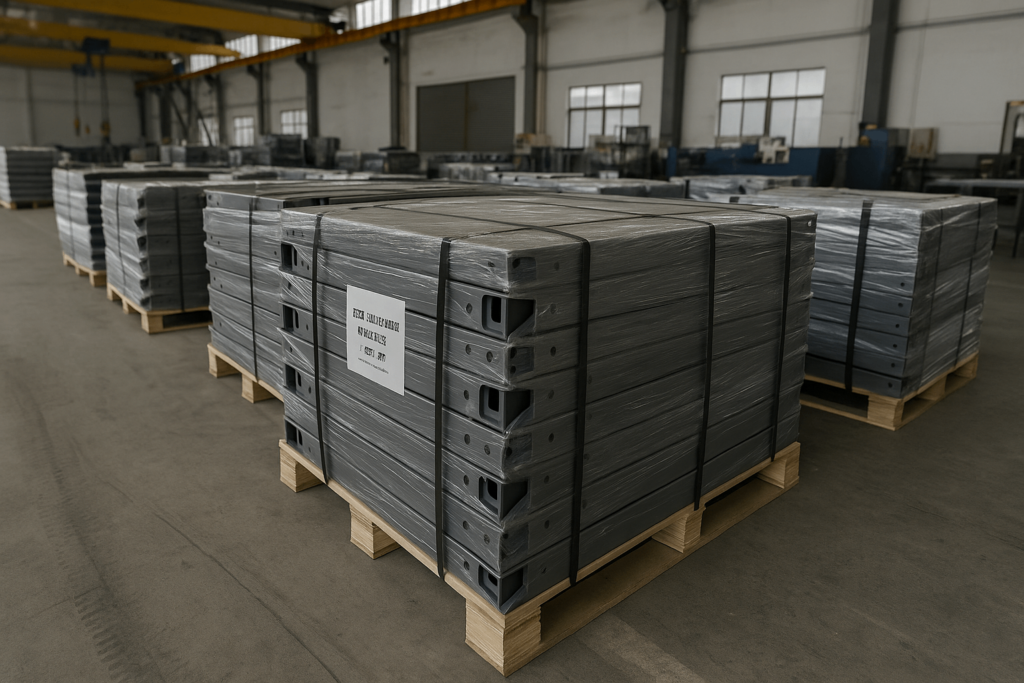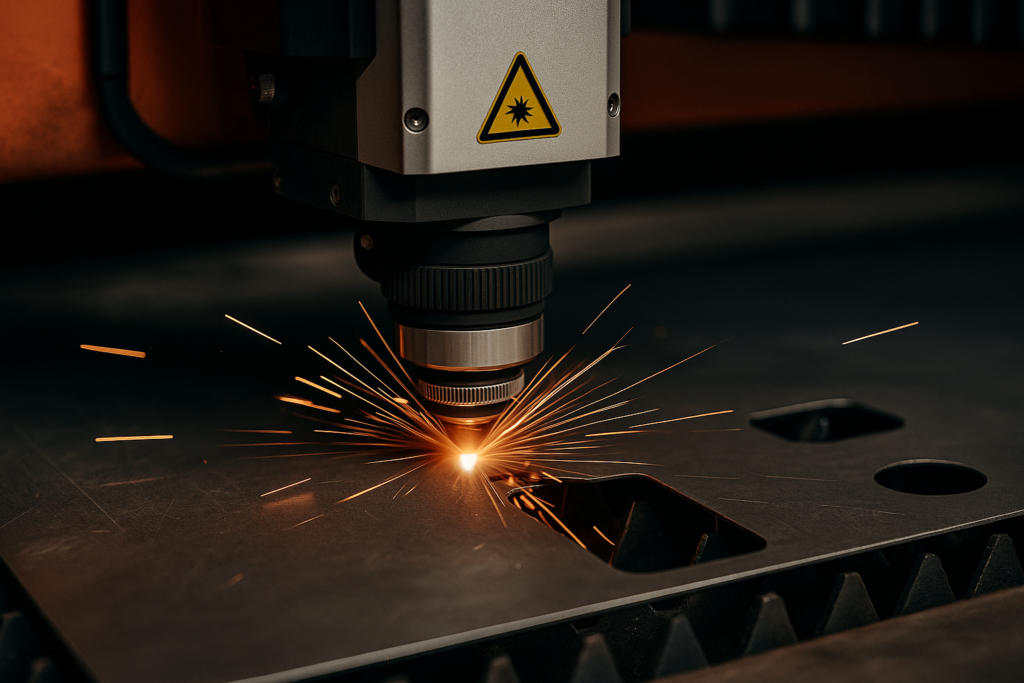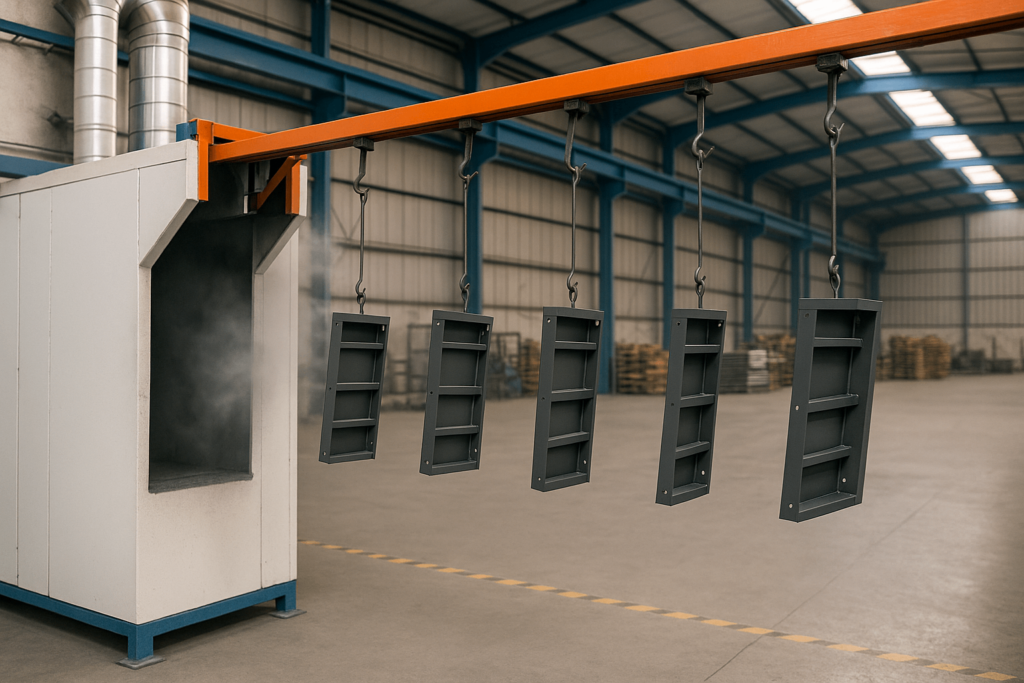Why Mild Steel Still Rules in Global Fabrication
Despite the rise of alternative materials, mild steel—a form of low carbon steel—continues to dominate the global metal fabrication market. According to the Worldsteel Association, mild steel accounts for over 75% of fabricated steel products worldwide. This enduring popularity is due to its high machinability, adaptability to automated processing, and affordability in mass production.
From high-speed manufacturing lines to flexible modular builds, mild steel supports a wide range of industrial scenarios. Its balance between strength and cost-efficiency makes it a preferred choice for manufacturers under pressure to deliver on time, on spec, and on budget.
Why Procurement Teams Choose Mild Steel Over Alternatives
For international OEMs and bulk procurement managers, mild steel offers a unique mix of design flexibility, fabrication responsiveness, and supply chain stability. Its lower carbon content (<0.25%) enables precise bending, consistent laser cutting, and excellent compatibility with CNC sheet metal fabrication.
From vending kiosks to battery cabinets, mild steel fabrication offers a scalable way to meet volume demands without compromising finish or integrity. Buyers can access a mature ecosystem of finishing options, testing protocols, and container-ready packaging systems—ensuring fewer issues during customs clearance and final integration.
Suppliers like YISHANG respond to these industrial needs with vertically integrated services, allowing procurement teams to simplify sourcing and scale operations with confidence.
From Raw Material to Engineered Component: The Mild Steel Fabrication Journey
Mild Steel Grades and Their Roles in Fabrication
Understanding the role of each mild steel grade helps procurement specialists balance performance with cost. The selection affects weld integrity, surface finish quality, and corrosion resistance—critical factors for any wholesale metal component supplier.
| Grade | Properties | Use Cases |
|---|---|---|
| 1010 | Excellent ductility | Panels, light brackets |
| 1018 | Fine surface, machinable | Shafts, precision metal components |
| 1020 | High weldability and formability | Furniture frames, small enclosures |
| Grade A | High toughness, cost-effective | Bulk structural frames |
| EN1A | Free-machining, low friction | Bushings, threaded parts |
| EN3B | Ideal for MIG/TIG welding | Stands, POS frames |
| Galvanized | Corrosion-resistant zinc layer | Outdoor cabinets, road fixtures |
YISHANG matches each project requirement with optimal grades, ensuring durability in shipping and longevity in use—especially when surface treatments and export handling are involved.
Fabrication Capabilities for OEM and Bulk Buyers
When sourcing from a metal parts supplier overseas, buyers should vet capabilities beyond raw output. Focus should be placed on repeatability, integration readiness, and defect mitigation. Key processes include:
CNC Laser Cutting with tight tolerance control (±0.1mm), vital for modular assemblies and high-volume mild steel fabrication services.
Automated Press Brake Bending to reduce angle variance in flat-pack assembly parts.
Welding (MIG/TIG) that complies with batch specifications and eliminates thermal distortion.
Machining Post-Weld to finalize tapped holes, connector ports, or interface zones.
Surface Finishing such as RoHS-compliant powder coating, galvanizing, and phosphate washing.
Choosing a vertically integrated supplier reduces transit touchpoints and enables single-source accountability across fabrication, coating, QC, and packaging—ideal for anyone seeking a custom mild steel components manufacturer.
Engineering Challenges in Mild Steel Sheet Fabrication
Even though mild steel is easier to work with than stainless steel, fabrication requires attention to several engineering nuances.
Thermal distortion during high-volume welding can compromise frame integrity. Qualified vendors use reverse clamping or stitch welding strategies to control heat zones.
Flatness and bend accuracy directly impact batch consistency. For CNC sheet metal parts used in export displays, even ±1° variation can prevent proper fitment.
Corrosion pre-treatment is also vital. Without phosphate or passivation steps, mild steel may underperform in humid or coastal regions—especially during long-term export transit.
YISHANG integrates process-level inspection with automated QA systems, including smart calipers, finish thickness scanners, and CAD file comparison tools for advanced mild steel sheet metal fabrication.
Practical Applications for Bulk Mild Steel Fabrication
Modular Vending Machine Frames
Powder-coated mild steel is ideal for vending machines due to its rigidity, customizable thickness, and ease of internal bracket integration. Bulk buyers benefit from easy maintenance and part interchangeability from an export quality mild steel parts supplier.
Store Fixtures and Display Structures
Retail OEMs favor mild steel over aluminum for structural POS displays. Its weight adds stability, and galvanized variants offer indoor/outdoor placement flexibility.
Mild Steel Battery Cabinet Fabrication
For the energy sector, low carbon steel is selected for battery enclosures due to its EMI shielding capability and high strength-to-cost ratio. Enclosures fabricated from mild steel also meet UL, IEC 62208, and NEMA 3R requirements when finished with compliant coatings—a specialty of OEM mild steel enclosure suppliers.
These use cases reflect bulk-oriented design thinking: maximizing shipping density, streamlining downstream assembly, and supporting fast field replacement.
Surface Treatments that Enhance Export-Grade Mild Steel Parts
Surface finishing protects mild steel against oxidation and contributes to aesthetics and certification.
| Finish Type | Application Scope | Export/Compliance Benefit |
| Powder Coating | Enclosures, display frames | VOC-free, RoHS-compliant, abrasion-resistant |
| Galvanizing | Outdoor cabinets, kiosks | Salt-spray tested, ideal for container shipping |
| Wet Painting | Custom small-batch orders | Fast application, suitable for prototypes |
International sourcing agents often verify coating certifications, thickness test results, and masking quality—especially for parts requiring grounding or final assembly wiring. These considerations are central to custom sheet metal enclosures for export.
YISHANG provides full traceable test reports with packaging, supporting CE and REACH compliance audits.
Fabrication 4.0: Smarter Production for High-Volume Buyers
Digital transformation is redefining fabrication at scale. In modern mild steel production, smart systems not only increase output but also enhance internal consistency and defect mitigation.
YISHANG leverages:
CAD/CAM workflows to simulate cutting paths and validate tolerances before production.
Robotic welding arms that reduce human variability across thousands of identical assemblies.
Real-time monitoring tools to log bending deviations, laser kerf width, and surface irregularities within the production floor.
This closed-loop intelligence enables continuous quality assurance from the inside out, helping meet tight timelines and regulatory conformity for global orders.
Compliance and Documentation: Your External Assurance
Beyond internal process control, global buyers expect thorough documentation and traceability to ensure hassle-free customs clearance and product validation.
YISHANG delivers on this front with:
Material certifications (MTC/MTR) to confirm base steel grade and supplier origin.
Heat number tagging and database mapping, enabling product-level traceability post-shipment.
RoHS, REACH, and CE documentation bundles, ensuring environmental compliance and market access.
Custom export labeling, including HS code classification, fumigation instructions, and humidity-sensitive packaging.
This external-facing traceability package is crucial for OEMs who may need to respond to post-sale audits, warranty returns, or component recalls. Where Fabrication 4.0 guarantees internal consistency, documentation builds buyer confidence and regulatory safety.
Mild Steel vs Stainless Steel: What Procurement Should Consider
Is stainless steel stronger than mild steel? Technically, yes. But for buyers making economic decisions, strength is only one factor.
Stainless steel is preferred for corrosion-critical environments but comes at a premium cost and lower formability. In contrast, mild steel—especially when powder-coated—provides nearly equivalent durability in protected applications, at 30–50% lower cost.
For instance, mild steel battery enclosures used in telecom cabinets can meet IP standards and EMI shielding requirements if designed properly and finished with compliant coatings.
Buyers should evaluate functionality per dollar, not just tensile strength. YISHANG offers DFM (Design for Manufacturing) guidance to help clients choose wisely between mild and stainless steel.
Strategic Use of Mild Steel in Global Supply Chains
Mild steel fabrication is more than a manufacturing decision—it’s a supply chain optimization strategy. It enables scalable production, better cost control, and greater design flexibility.
Paired with a fabrication partner experienced in documentation, export logistics, and industry compliance, mild steel becomes a strategic material choice for OEM projects.
Looking to streamline your next project with a reliable supplier? Reach out to YISHANG for tailored mild steel solutions built for export, repeatability, and regulatory compliance.





